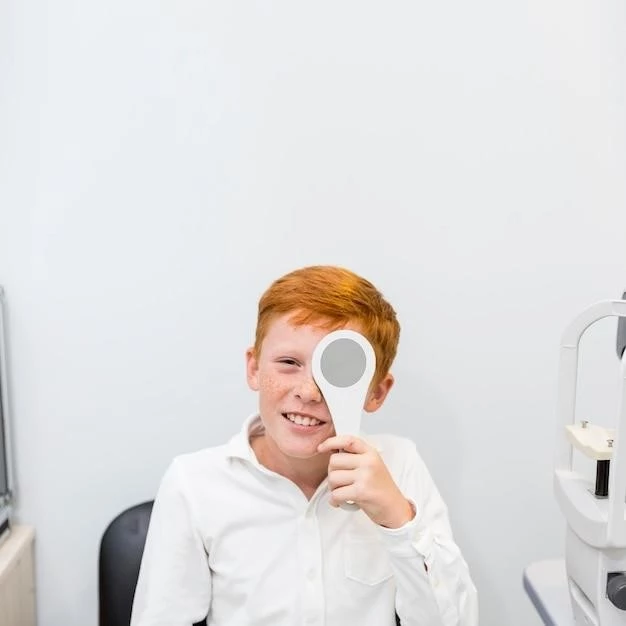Causes of Atopic Conjunctivitis
Atopic conjunctivitis can be triggered by environmental factors or genetic predisposition.
Environmental Factors
Environmental factors that can contribute to atopic conjunctivitis include exposure to allergens like pollen, dust mites, pet dander, and air pollution. Irritants such as smoke, strong odors, and certain chemicals may also trigger or worsen symptoms of this condition.
Genetic Predisposition
Individuals with a family history of atopic conditions like asthma, eczema, or allergic rhinitis may have a genetic predisposition to develop atopic conjunctivitis. Genetic factors play a role in the immune system’s response to allergens, influencing the likelihood of developing this eye condition.
Symptoms of Atopic Conjunctivitis
Typical symptoms include redness, itching, excessive tearing, and swollen eyelids.
Redness and Itching of the Eyes
Redness and itching are common symptoms of atopic conjunctivitis, caused by inflammation in the eyes’ conjunctiva. Patients may experience a persistent desire to rub the eyes, which can exacerbate the discomfort. It is essential to seek medical advice for proper management.
Excessive Tearing
Excessive tearing, medically known as epiphora, is a common symptom of atopic conjunctivitis. The eyes produce more tears in response to irritation or inflammation, leading to watery eyes; Proper diagnosis and treatment by a healthcare professional are crucial to manage this symptom effectively and alleviate discomfort.
Swollen Eyelids
Swollen eyelids are a common symptom of atopic conjunctivitis, often due to the body’s inflammatory response. This swelling can cause discomfort, itching, and a puffy appearance around the eyes. Proper diagnosis and treatment are essential to address the underlying cause and alleviate the swelling effectively.
Treatment Options for Atopic Conjunctivitis
Treatment modalities include topical antihistamines, steroid eye drops, and immunomodulators.
Topical Antihistamines
Topical antihistamines are commonly used to relieve itching and reduce allergic reactions in atopic conjunctivitis. These eye drops help block histamine receptors, reducing symptoms like redness and itching. It is essential to follow the prescribed dosage and frequency for optimal results and minimal side effects.
Steroid Eye Drops
Steroid eye drops are prescribed to manage inflammation associated with atopic conjunctivitis. These drops help reduce swelling, redness, and itching by suppressing the immune response in the eyes. It is crucial to use steroid eye drops as directed by a healthcare professional to minimize potential side effects and ensure effectiveness.
Immunomodulators
Immunomodulators are utilized in the treatment of atopic conjunctivitis to regulate the immune response and reduce inflammation. These medications work by modifying the immune system’s activity to prevent allergic reactions in the eyes. By targeting the underlying immune dysfunction, immunomodulators can help manage symptoms and improve the overall condition of the eyes.
Prevention of Atopic Conjunctivitis
Prevention strategies include avoiding allergens and maintaining proper eye hygiene.
Avoiding Allergens
Avoiding allergens like pollen, dust mites, and pet dander can help prevent atopic conjunctivitis flare-ups. Implementing measures such as using air purifiers, keeping windows closed during high pollen seasons, and washing bedding regularly can reduce exposure to triggers. Consultation with an allergist may also be beneficial in identifying specific allergens to avoid.
Proper Eye Hygiene
Maintaining proper eye hygiene is essential in preventing atopic conjunctivitis. This includes avoiding eye rubbing, regular hand washing, using a clean towel for drying the face, and removing contact lenses before sleep. Keeping the eyes clean and free from irritants can help minimize the risk of inflammation and allergic reactions.
Difference Between Allergic and Atopic Conjunctivitis
Allergic conjunctivitis is triggered by specific allergens, while atopic conjunctivitis is associated with a general allergic or atopic tendency.
Etiology and Pathophysiology
Allergic conjunctivitis is primarily triggered by allergens, leading to an immune response in the eye. Atopic conjunctivitis, on the other hand, is a part of the systemic atopic disease spectrum, where a genetic predisposition to allergic conditions influences the development of eye inflammation.
Clinical Presentation
Allergic conjunctivitis typically presents with acute symptoms upon exposure to allergens, such as eye itching and redness. In contrast, atopic conjunctivitis may be chronic and associated with a history of atopic conditions like eczema or asthma, manifesting as long-term eye inflammation and discomfort.

Managing Atopic Conjunctivitis in Children
Effective management includes implementing a gentle eye care regimen and consulting a pediatric ophthalmologist.
Gentle Eye Care Regimen
Establishing a gentle eye care regimen involves using mild cleansers, avoiding harsh chemicals near the eyes, and gently wiping the eyelids with a clean, damp cloth. Teach children not to rub their eyes vigorously and to follow proper eye hygiene practices to minimize irritation and inflammation associated with atopic conjunctivitis.
Consultation with Pediatric Ophthalmologist
Seeking a consultation with a pediatric ophthalmologist is crucial for comprehensive care of atopic conjunctivitis in children. An ophthalmologist can provide a tailored treatment plan, monitor eye health, and address any concerns or complications that may arise. Regular eye exams and expert guidance from a specialist can optimize the management of this condition in pediatric patients.
Complications of Atopic Conjunctivitis
Potential complications include corneal damage and secondary eye infections.
Corneal Damage
Atopic conjunctivitis can lead to corneal damage if left untreated, potentially causing vision problems. Chronic inflammation and persistent rubbing of the eyes can result in abrasions, ulcers, or scarring on the cornea. It is vital to seek prompt medical intervention to prevent long-term complications and preserve eye health.
Secondary Infections
Individuals with atopic conjunctivitis are at risk of developing secondary infections due to compromised eye immunity. Continuous eye rubbing can introduce bacteria or viruses, leading to conditions like conjunctivitis or keratitis. Prompt detection and treatment of secondary infections are essential to prevent further complications and preserve ocular health.
Natural Remedies for Atopic Conjunctivitis
Natural remedies can complement conventional treatment but should be used under medical guidance.
Cold Compress Therapy
Cold compress therapy can help reduce eye inflammation and soothe discomfort in atopic conjunctivitis. Applying a cold compress over closed eyelids for short periods can provide relief from itching and swelling. However, it is essential to ensure the compress is clean and not too cold to prevent further irritation. Consult a healthcare provider before using this natural remedy.
Eyebright Herb Infusion
Using an eyebright herb infusion as an eye wash may offer relief for atopic conjunctivitis symptoms. Eyebright is believed to have anti-inflammatory and soothing properties that can help alleviate eye redness and irritation. However, it is crucial to consult a healthcare professional before using herbal remedies to ensure safety and effectiveness.
